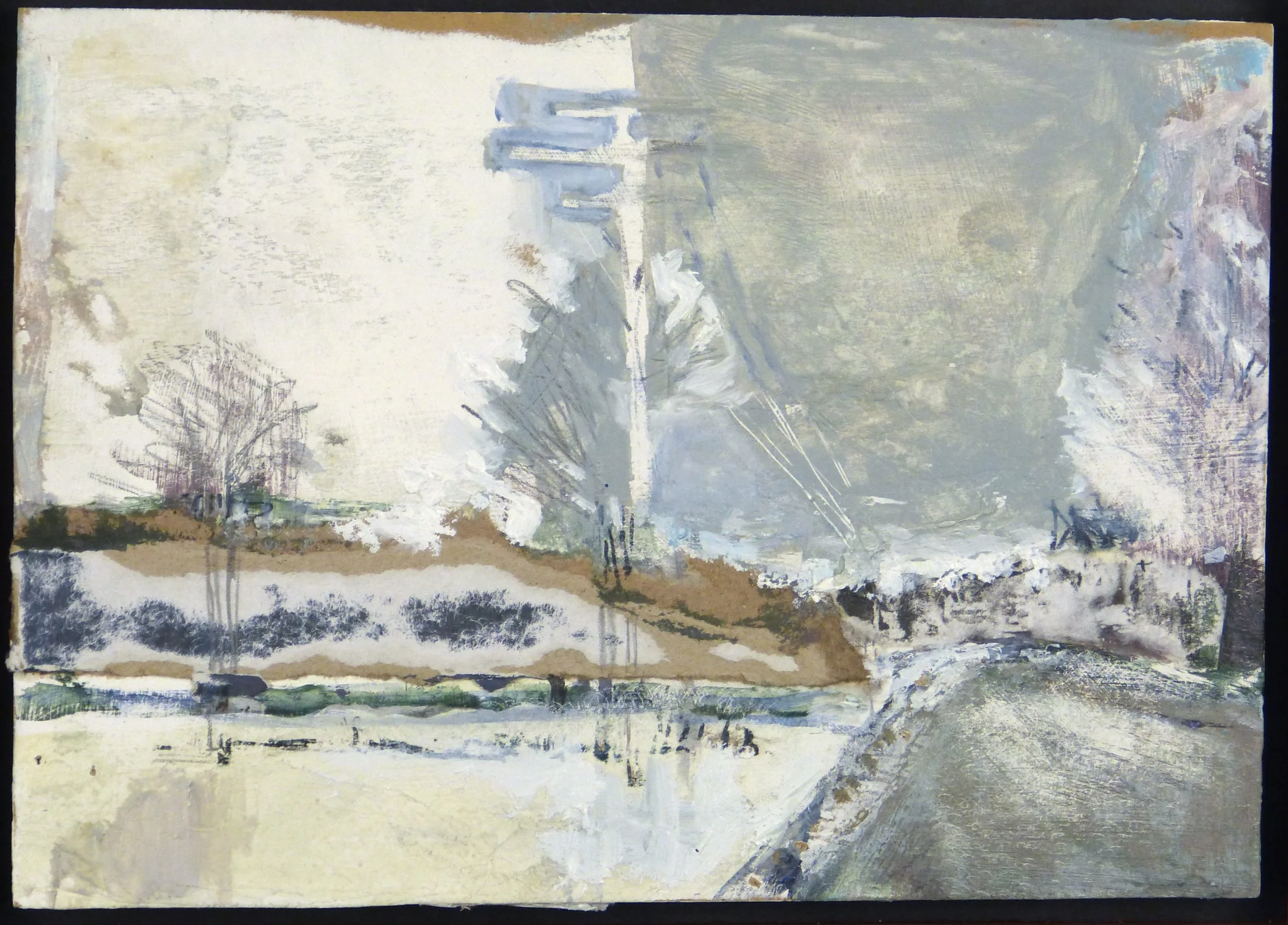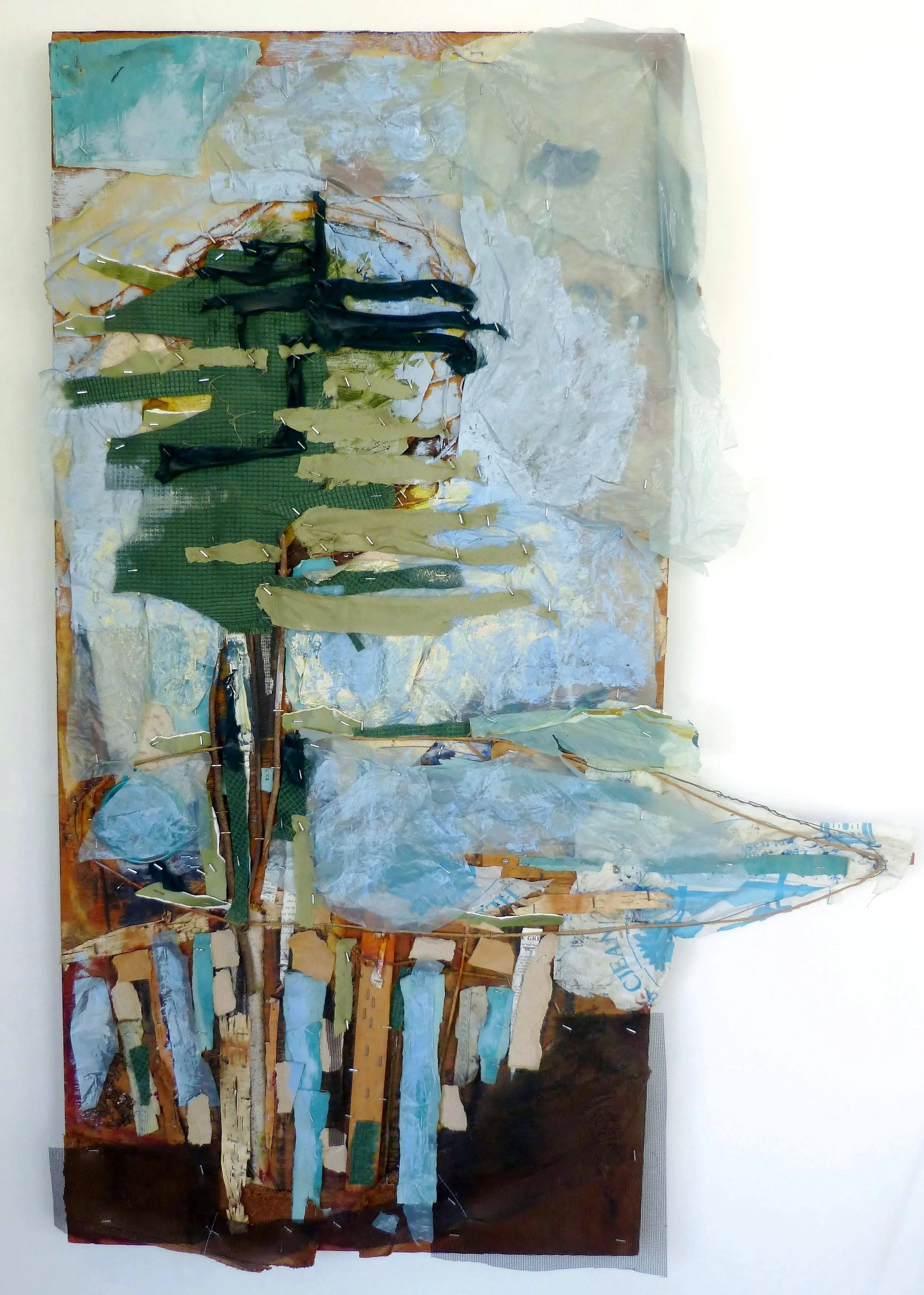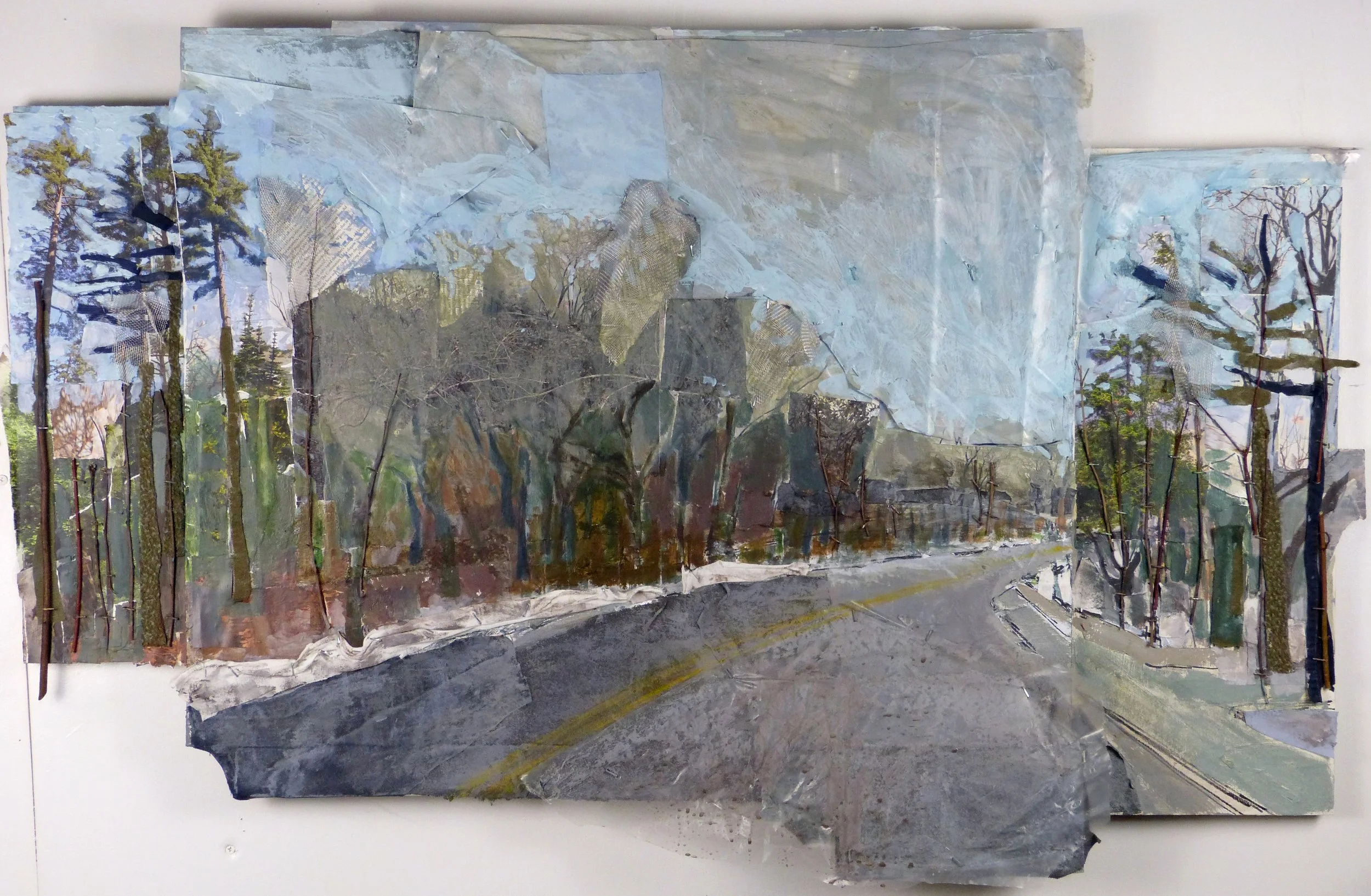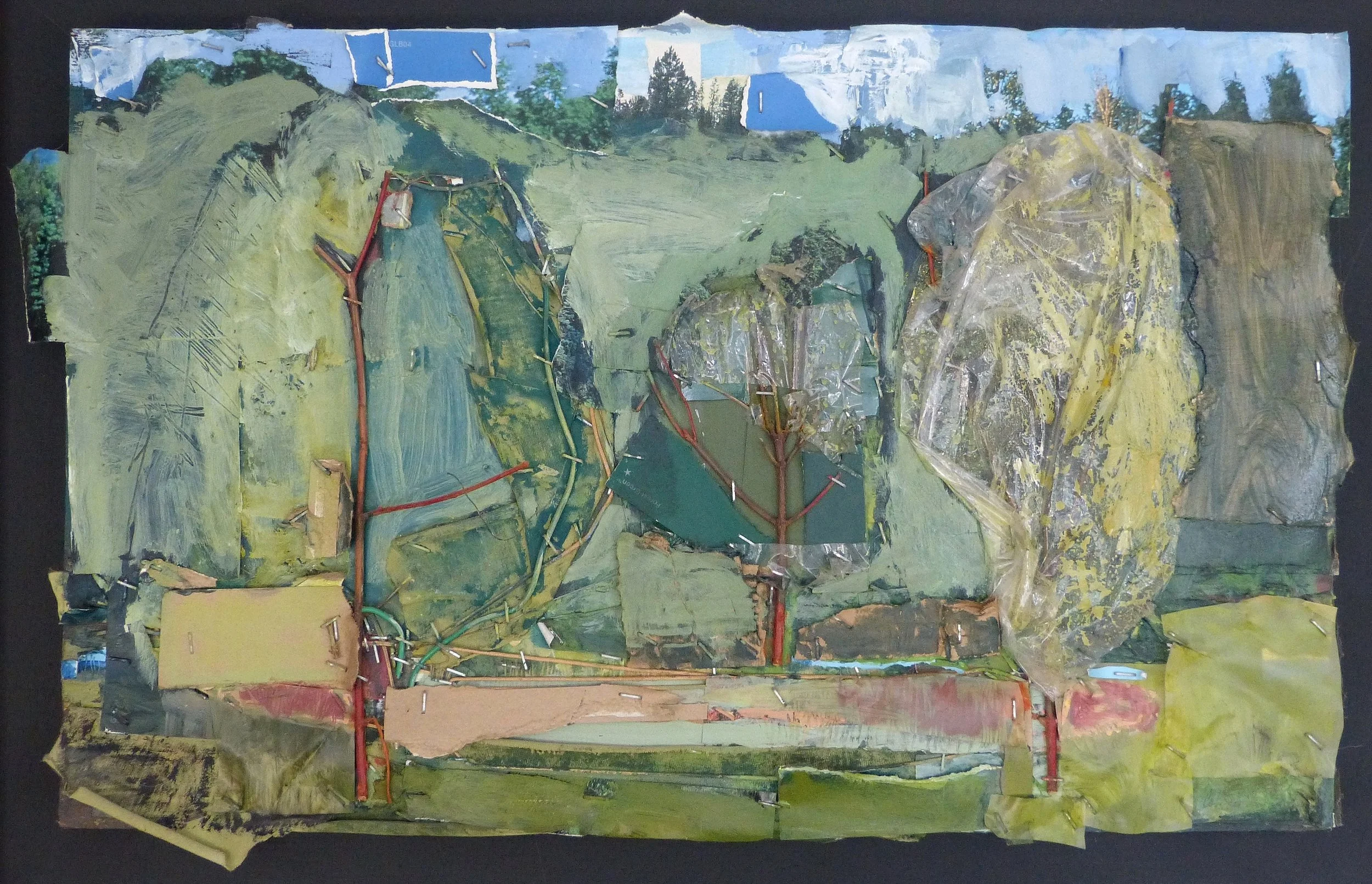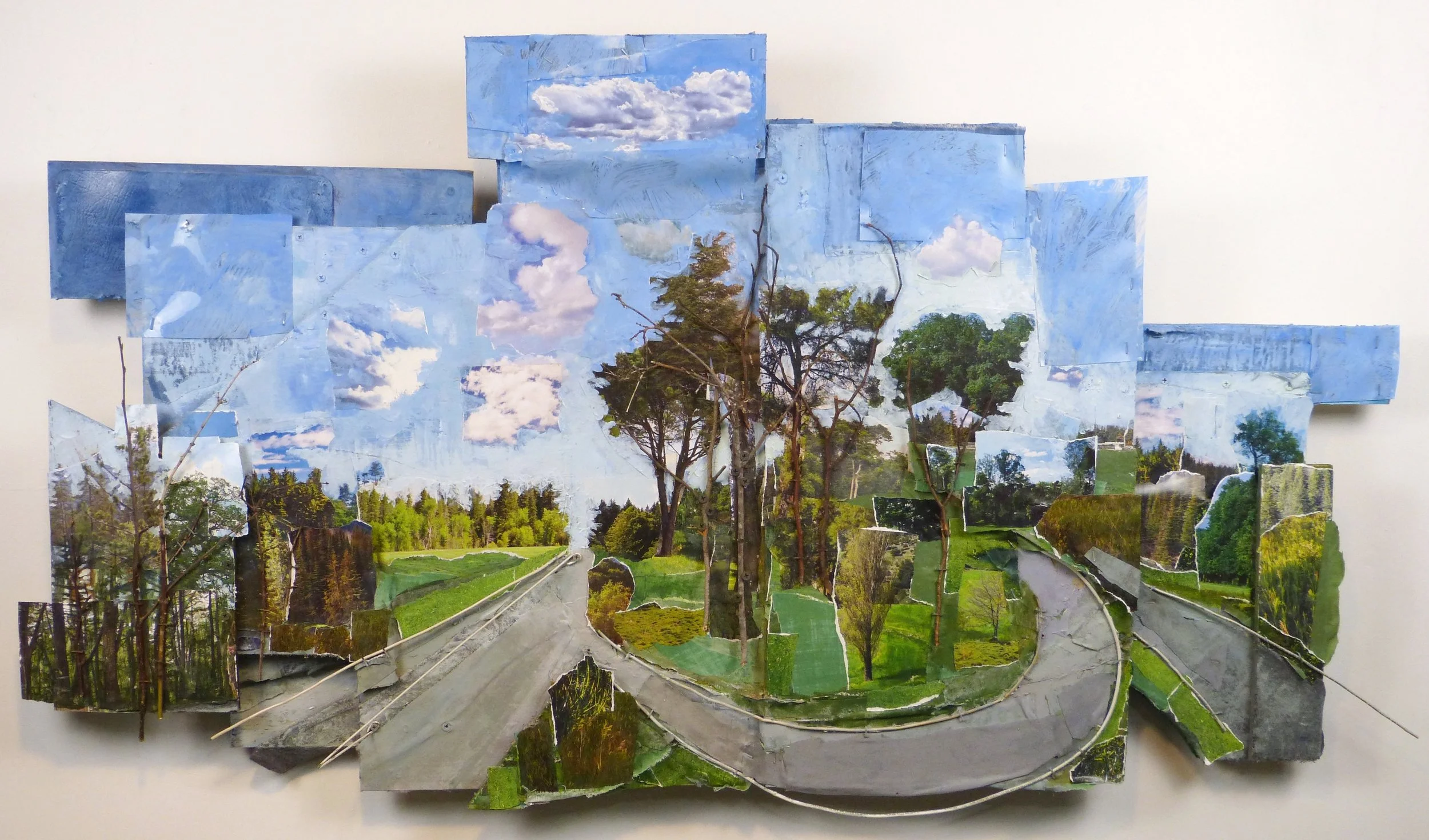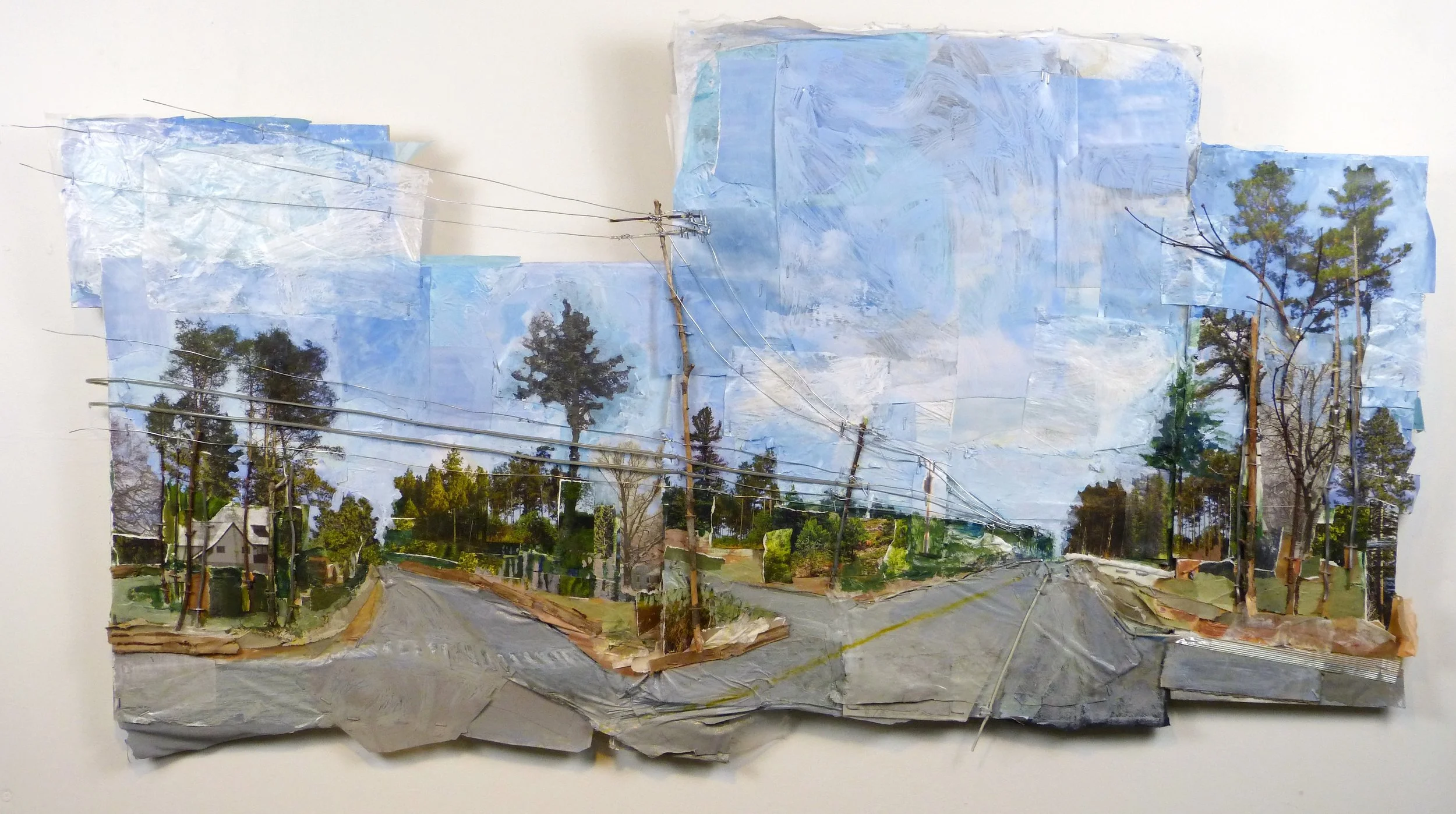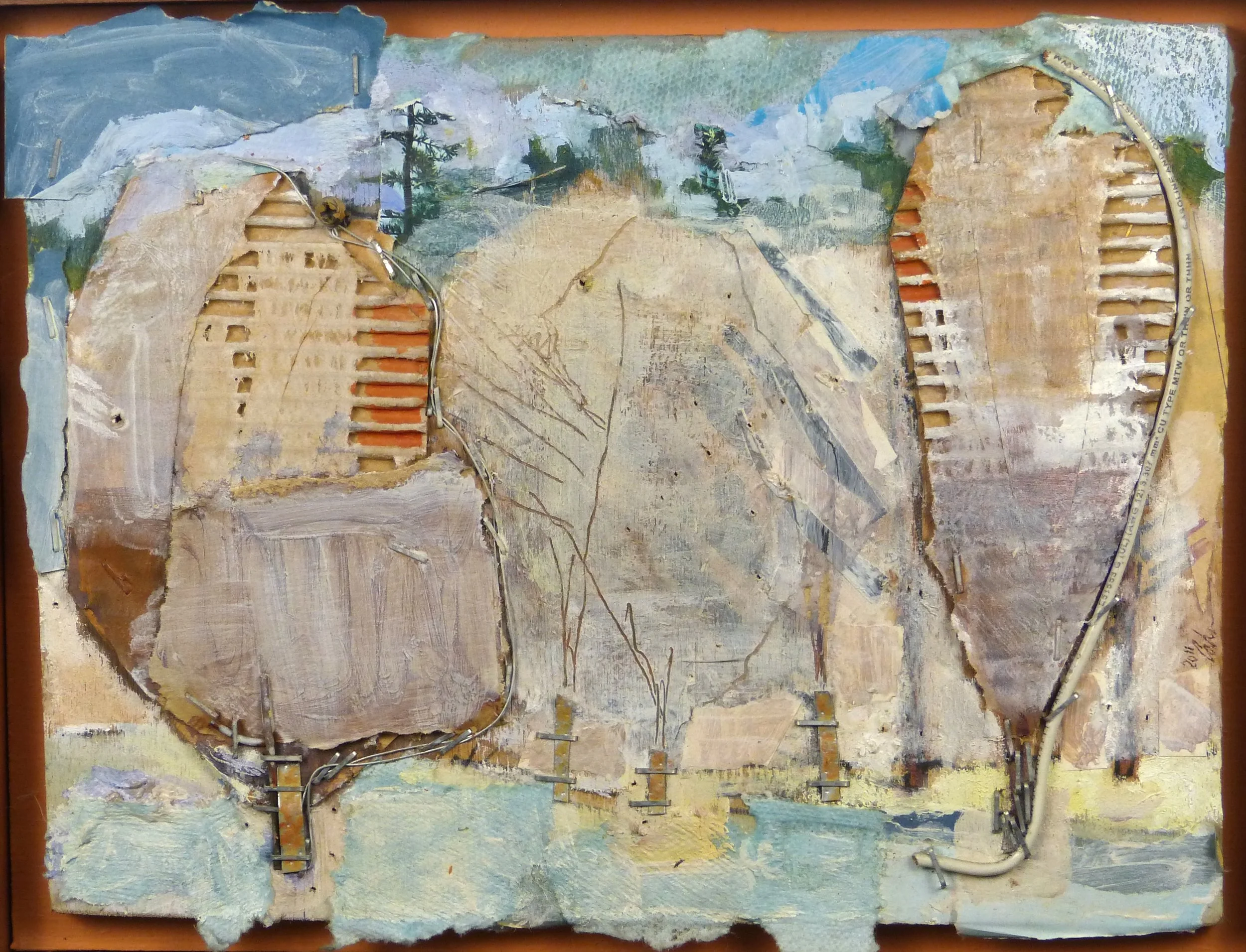Kris Calnan: New Hampshire Landscapes
I apologize for the tardiness of my post–I have been quite under the weather and stretched extremely thin all week and have not had the chance to pull together the blog post until now. Thankfully, Kris Calnan, the artist currently showing in the gallery, kindly sent me several reflections on his process and his background that I read several times over while looking at his work.
Not every artist is so loquacious or even willing to talk about their art. It is a gift when an artist is willing to share a page and a half of single-spaced prose about his process and background, when given the minimal prompt of, “Could you please share with me a few words about your work so I can prepare the blog?” What kind of person would I be to filter his words through paraphrasing and my own interpretation, in the name of writing this blog? I am not a believer in that. While I have picked excerpts of what he sent in order to pair them with his work, most of what he wrote to me is in this post. So without further ado, I give you Kris Calnan.
Near Hopkinton Dam, MixedMedia 5x9in, 2022
“I’ve been a working artist since 1992. Early in my career, I worked more traditionally in oil paint
trying to develop a personal visual language. These paintings were influenced by academic work in college and the artists I admired like David Parks and Richard Diebenkorn. After college, I taught visual arts at a high school in Albuquerque, NM. Ironically, despite an MFA in painting, it was my high school students who provided the most informative art lessons. In a course I taught, students produced collage images that were both aesthetically engaging and inspiring. Their picture making was often less constrained and more visceral. It possessed an overt energy about doing the act of making art. I began to change the way I produced paintings. It was a slow matriculation and developed at a pace dictated by other life events. The paintings in this exhibit represent the evolution of my work in mixed media imagery and the influence of the New Hampshire landscape.
MacDowell Dam Pond, Peterborough, NH", Mixed Media, 49" x 33", 2017
“When you travel the roads of New Hampshire, interesting visual relationships appear. It’s not comparable to the stunning splendor of the upper Rocky Mountains in Alberta, Canada. The Granite State is more pedestrian, yet rugged. The Monadnock Region, where I live, is named after its highest peak, Mount Monadnock. Local artists have and continue to do endless renderings of this humble mountain. I have not considered it. I am more intrigued with relationships of forms created by man and nature.
101E, Near Dublin Center, Mixed Media, 29" x 46", 2024
“Originally, I generated paintings outdoors in a natural setting (en plein air). As my interest in mixed-media developed, it became impractical, so I began to draw scenes and included written notes as reminders of what I saw. In time, technology and the iPhone camera became more convenient and replaced the drawings.
Summer Grove St. 5, MixedMedia, 16x27in, 2015
“As I produce paintings, I become visually absorbed by the way found materials interact with paint. For example, the way acrylic paint behaves on plastic based on the amount of water dilution or the inclusion of paint medium. I also work aesthetically and compositionally on balancing the inherent tension with mixed media between attached materials and spatial organization.
On Ramp, Near Concord, NH, Mixed Media, 28" x 52", 2025
“Recently, I began to create paintings consistent with how I actually see the landscape. When I look at a scene, I see it in fragments, not its entirety. I think this is true for all of us. Our vision sort of skips around and synthesizes the visual experience. In other words, we visually compilate what we’re looking at all the time.
202, Near South Meadow, Mixed Media, 27" x 51", 2025
“The use of mixed-media developed after teaching secondary visual art. That was 25 years ago. I was showing my students examples of work by Romare Bearden, Kurt Schwitters, Joseph Cornell and George Braque. As I mentioned above, my students would produce some remarkably engaging work. As my work developed, I began to embrace the idea of duality. This was in part influenced by Taoist writings, yoga and Buddhism which I was studying at the time. Arguably, there are two primary poles in 2-dimensional visual art - abstraction and representation. I wanted to explore both possibilities in the same image. The idea was to aesthetically resolve the tension created by overt surface elements with spatial compositional organization. That is what I have been working on. I also felt a clean edged rectangular format, was inconsistent with how I was making these images. So, I began to push outside the format. This was the beginning of integrating irregular formats. Initially, it was a way to resolve an issue with composition. In my creative process, this meant adding an additional shape later in the development of a painting. Recently, the shape of the format is determined by how I witness a given subject. Some things feel closer and perhaps more dominant, other things less so. So, the irregular format is consistent trying to articulate how I truly see something.
84 Grove, Winter, #2, Mixed Media, 10x12 inches, 2011
“My creative process begins with a conceptual sketch of the subject which I transcribe to a rigid support like plywood. I block in the local color with paint. Then, the process accelerates into visceral chaos. A spectrum of collage materials – found objects, paper, magazine, wire, andcloth are integrated and attached with acrylic medium, staples or screws. The last part of my process is analysis, a critique of what is there. My process is an exercise in construction and destruction, intuitive and analytical – opposing forces.”
This beautiful show runs from July 15 to August 2, 2025, with an opening reception on Thursday, July 17, from 5-8pm.

